As an Amazon Associate I earn from qualifying purchases.
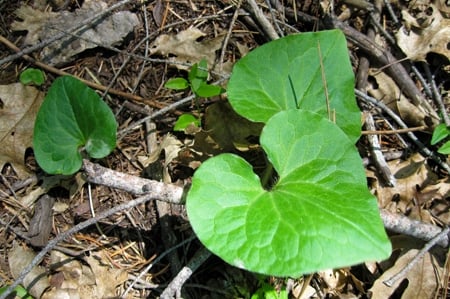
Rarely does a gift come without a price. Much of the food we eat can be toxic to us, depending on how much we consume, on how we combine certain foods and on who we are, genetically speaking.
Eat too much unenriched corn? You get pellagra. Mixed inky cap mushrooms with alcohol? Get ready for a honking case of food poisoning. Are you of Asian descent? Chances are you cannot digest milk.
Just as with bracken fern, cicerchia beans and, to some extent daylilies, wild ginger is a double-edged sword.
I am talking here about North American wild gingers: Eastern, which is Asarum canadense, and Western, A. caudatum. Neither is closely related to the ginger you get in the store, but both are deeply aromatic and smell very much like store-bought ginger. Their taste is far more subtle, and a little more peppery than regular ginger. Both have been used for eons by Native Americans, and pretty consistently by Americans of European extraction since 1600.
Related plants feature prominently in Chinese traditional medicine, and herein lies the problem. Back in 1992, a horrific outbreak of kidney failure cropped up in Belgium. More than 100 people suffered everything from minor kidney damage to total renal failure. Three died.
Medical investigators tracked down the cause: Diet pills loaded with a botanical relative of our ginger, a Chinese herb known as Aristolochia fangchi. The culprit in this herb is a substance known as Aristolochic acid, or AA. And it turns out that all kinds of Chinese herbs contain AA.
Why were they in diet pills? Traditionally, many of these herbs are also diuretics — and diuretics make you pee a lot, which in turn helps you lose water weight. Diuretics are in a lot of diet products to give people the illusion of fast results.
As it happens, our gingers also can contain significant amounts of AA. In one study, some Asarum canadense (pictured below) contained 0.037 percent by dry weight of AA. Western wild ginger had consistently lower levels of AA, but it was still present.
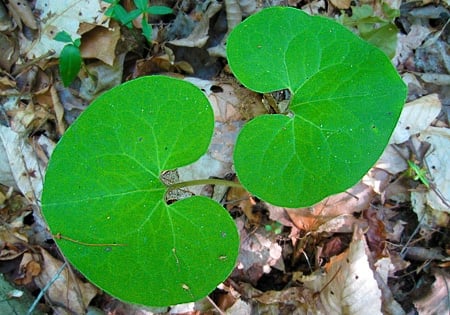
Here we go again. Once more, it is “the poison’s in the dose” effect that we’ve seen before, especially in bracken fern. The studies attempting to recreate what happened to the Belgians fed rats about 10 milligrams of pure AA per kilogram of their body weight each day for 3-12 months. This was roughly the amount of pure AA the Belgians were eating. After the study, all the rats had serious kidney problems.
So it is not in question that AA can cause serious health problems, and given that wild ginger contains this substance, it’s best to not eat it, right? But how relevant is this study to reality? Lots of studies give rats unreasonable amounts of something, just to induce health problems. Is it possible to ingest a dose similar of pure AA similar to what the rats got by eating wild ginger?
Possible, but unlikely. Unlike the case of sassafras, where it would be nearly impossible to ingest enough safrole to get to the toxic doses given to rats in those studies, it is indeed possible to eat enough wild ginger to approach this danger zone.
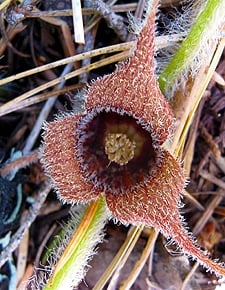
OK, to start, let’s assume that all wild gingers in North America contain 0.037 percent pure AA by weight: This is not true, as this was the highest level tested of the Eastern wild ginger, and remember the Western wild ginger had lower levels. But for the sake of this exercise let’s assume the worst. So 2 ounces of wild ginger, which is a healthy handful, equals 56,699 milligrams. That means those 2 ounces contain roughly 21 milligrams of pure AA.
Now I weigh 175 pounds, which is 79 kilos. I would need to eat 790 mg of pure AA to get to the daily dose that gave the rats all those health problems, so I’d need to eat about 4 1/2 pounds of wild ginger to get to that daily dose. And remember that the rats were given this dose for 3-12 months. I am still not sure that eating wild ginger is a great idea, however.
Why? I have not been able in my research to determine how “sticky” this AA stuff is, i.e., does the body flush it like other toxins? Or does it bioaccumulate forever? If someone can show me that the body flushes AA I’d feel a lot better about chowing down on some wild ginger.
But before you write off wild ginger entirely, let me throw a monkey wrench into your thinking. Eating wild ginger may be a chancy proposition, but that doesn’t mean you can’t still enjoy it.
Read through the Chinese literature on this and it seems that all these herbs that contain AA in them are, for the most part, not meant to be eaten at all. No, they are meant to be steeped in a tea and drunk. You toss the herb afterwards. The Chinese not being stupid, further research pops up this important tidbit: Aristolochic acid is barely soluble in water.
This, my friends, is the key.
The FDA protocol for extracting AA is to use formic acid and methanol. Last I checked, no one likes to eat the poison fire ants give off, and all you distillers out there (and you know who you are) will note that methanol is what makes you go blind. However, methanol is close enough to the alcohol we all know and love to make my idea of infusing wild ginger with vodka seem not so smart. Not sure I want maximum extraction of that AA in my ginger for a cocktail.
Another idea I had — making a wild ginger vinegar — also was scotched by the science. It seems AA is also highly soluble in acetic acid. Damn.
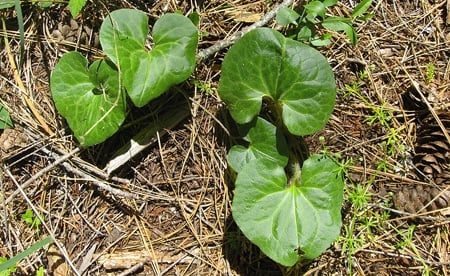
Water is your friend. The Meridian Institute determined empirically what the Chinese herbalists have been prescribing for eons: Steeping the various AA-containing herbs, in the Institute’s case our Eastern wild ginger, in water for up to 8 hours extracts only 1 percent of the AA that the herb contains. One percent.
To go back to my example with the 2-ounce handful of wild ginger, even assuming it has the highest AA level that the Schaneberg study found, that would mean I would only ingest 0.21 milligrams of AA if I drank a tea infused with all that ginger. At that rate, I’d need to drink 3700 glasses of that tea to equal the amount of AA I would get from actually eating the ginger.
Now that I can live with. This is far closer to the low levels of risk you get by making your own root beer from sassafras, which is to say not very high.
What’s the takeaway to all this? Here are my recommendations:
- Do not steep wild ginger in alcohol or vinegar
- Eat wild ginger at your own risk
- Enjoy wild ginger steeped in water or a water-based product in moderation
Following my own advice, I made a wild ginger ice cream that was da bomb. It was also just about as low in AA as I could get: I used 2 ounces of Western wild ginger, which, remember, is significantly lower in AA than it’s Eastern cousin, to make a quart of ice cream. And there is no way I can eat a quart of ice cream in a day, or even a week. In terms of risk, I’d say the sugar and fat in the ice cream is a bigger health hazard than the small amount of AA present.
Bottom line is that this is a plant with powerful effects. It is both delicious, and, eaten in certain ways or in certain amounts, can be deadly. You must decide for yourself whether it’s worth it.

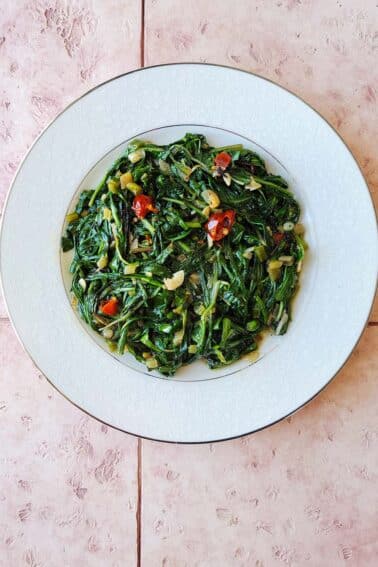

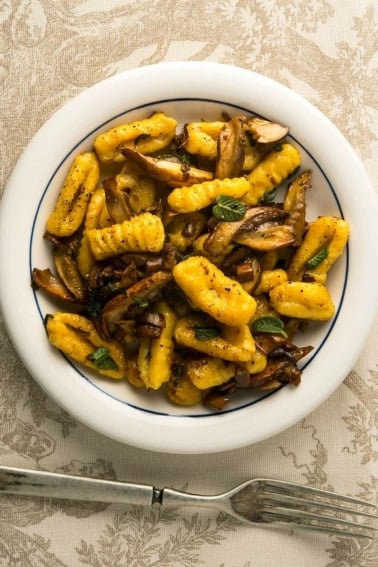
Is this poisonous to animals eating the leaves, like Muscovy ducks?
Casnavy: I have no idea.
Hey Hank,
Very interesting article – thank you. I’m a Chinese medicine practitioner and I have been wondering about the relative safety of our west coast Asarum species. The water solubility is a very important piece that seems overlooked. I wonder how many adverse reactions were due to powdered herb – most likely the Belgian diet pill containing Guang Fang Ji would have been a capsule with powdered herb.
It seems to me that establishing what level of AA that causes cancer and renal failure is important, but what’s more important is what is the maximum dose that DOESN’T have those results. In regards to your questions about bioaccumulation, I have read in other places that exposure to AA can be identified 20 years after exposure due to the changes AA can cause in the kidneys.
what about Chinese ginger? does it have the same issue?
Adam: No. They are completely different plants.
Any ideas on some of the ornamental gingers like the one with apricot coloured flowrers ? The root although pale in comparrision looks very similar to culinary ginger . Any idea on the differenc s in culinary vs non culinary types ? Thanks .
Vivi: Sorry, I am not familiar with those plants.
Great article!
Thank you for all this great info!!
Thank you for taking the time to type this up! Very helpful.
You never mentioned what part of the plant you used so I’m assuming you are talking all parts including roots and rhizomes?
I was reading an article that mentioned only using roots as stem and flower were poisonous but later gave the impression all plant was poisonous because of the aristolochic acid
Kim: No, only the leaves and stems.
Even with ordinary ginger, one has to be careful how to eat it. There’s a Chinese saying that goes: Ginger for breakfast is medicine which gives your body a boost. As lunch meal, it can reduce you to a very sick man. Taken as dinner, it will send you to the Devil!
How safe would be juicing it to add a flavoring to a fresh veggie juice? Would or be okay to do this on a daily basis, say juicing led a than 10 leaves?
Forest Fairy: I wouldn’t do it on a daily basis. But I’d absolutely do it once in a while.
Have you shared the ice cream recipe? I think kids would love it in summer while hot here at my nature home.
Is it SAFE?
Annette Clark
Great article! I’ve been diagnosed with kidney failure from a DNA mutation producing aristolochic acid which can come from Wild Ginger. I have no idea where this may have come from. Is it used in herbal supplements under a different name? Was it used in Phen Phen diet pills?
I was deep in the woods meditating and I came across this plant; had no idea what it was but it smelled nice so I decided to munch on some. Later I got home and looked it up knowing that somehow it must have some medicinal value (I could just tell!) and relieved to find out it does, and that it isn’t harmful. Thanks for the post!
which part of the Wild Ginger do you eat just the root or leafs too?
Leslie: Mostly the leaves and stems, but the stolons — the runners, like on a strawberry plant — are good, too. I don’t use the roots.
I planted ginger in my garden many years ago. It was given to me and I was told it was the kind you use in cooking. It has never flowered. I am trying to cook with more herbs and spices and would like to cook with this ginger if it is safe. Could I send you a picture of the plant and root and after looking at the plant could you tell me if it is safe for cooking. Please respond. Many thanks.
Regards,
Pam Moore
Just researching a bout of food poisoning from home made ginger kombucha. Not Wild ginger but thought you might find that interesting. The blueberry batch didn’t cause problems.
Hank!!
We met at Wild About Game, my name is Aurora Andrea and my boyfriend is Cameron he was working at the Bluehour stand. Anywho, we foraged a ridiculous amount of Wild Ginger root but after reading through some articles some are saying its best to use the stem. Which do you prefer? Is there a difference in using the root and not the stem? I have had them in water since 1am last night. Also I can’t wait to make some of your da bomb ice cream!
I would be very surprised if the acid bio-accumulates. Typically this is only seen with things that have a limited metabolic pathways such as heavy metals or synthetic organics like DDT or PCBs.
Question: I know wild ginger is contraindicated in pregnancy. However, what harm if any would simply tasting a small piece of the fresh root and then spitting out the remaining pulp cause? I unknowingly tasted it with a friend who may be pregnant. Thanks!
if you cook the ginger in a small amount of vinegar and discard the vinegar, I don’t think you would be able to stomach enough to have any associated health issues if you are a person of average health. this is also recommended for all greens that contain oxalic acid which can be dangerous to people with certain health conditions and is just not generally good in large amounts for anyone.spinach does contain enough of it that people with kidney stones are told to avoid it and certain people do develop inflammation issues from eating too many Raw greens. while I think this information is great and I appreciate you writing this article, in my opinion from working with herbs for many years is that we all tend to be extra cautious, and perhaps a little bit overly concerned with things that are not a large effect in the bigger picture.I really don’t think that anybody in the western half of states will ever have a problem with the low levels of a AA in the wild ginger. considering it usually grows by hemlock, and other highly toxic plants, I would be more concerned with accidentally getting some butter cup leaves or other plant material in with the ginger than the ginger itself. which also shouldn’t be a problem if you are a halfway aware individual so I guess what I’m saying is that all you really need is common sense and you should feel fairly comfortable with working with so called questionably toxic herbs.
Hi. I’m looking to buy the actual root of the wild ginger plant. Do you have any suggestions on where I can buy this root?
Heidi: Not sure. Maybe Prairie Moon Nursery?